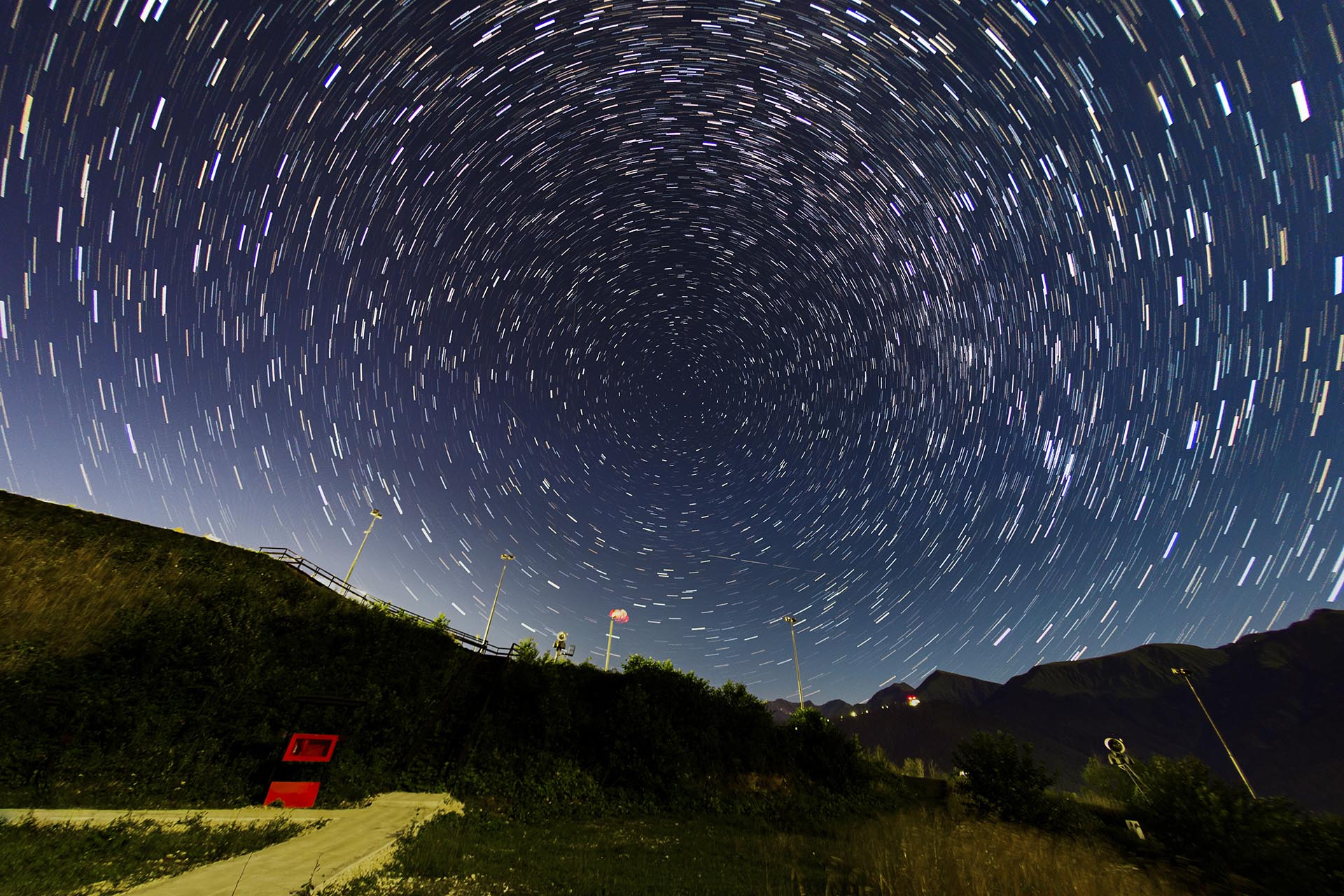Answer the question
In order to leave comments, you need to log in
How to photograph stars: ISO, shutter speed?
If you focus on the night sky and try to take a photo at 1600-6400 ISO with a shutter speed of 10 seconds, the light from the stars leaves lines that are obtained from the fact that our planet is moving quickly and covers a fairly large distance in 10 seconds - the star map shifts , the camera captures the luminous "traces", a high-quality photo cannot be taken.
Here is an example: https://web.500px.com/photo/1014964643
How to be and what to do?
On the other hand, if you do a little defocusing, then the stars remain thick luminous dots (which will become like hamsters with a slower shutter speed): https://web.500px.com/photo/1014964643
I understand that you need to slow down the shutter speed (and set the ISO more), however, then you get a dark picture. Maybe in professional shooting of astronomical objects, equipment is used that compensates for the speed of rotation of our planet, for a home user this is something from the science fiction section.
Answer the question
In order to leave comments, you need to log in
That's right, you need an astrotracker
https://habr.com/en/post/227499/
well, either collect more light through a telescope or other huge optics
https://astronomy.ru/forum/index.php?topic=47517.80
www.astro-electronic.de/fs2.htm
Option 1. Any camera with iso greater than 6000. Then you can take a short exposure. Minus: such cameras are expensive, and the image will be noisy due to high iso.
Option 2: An f/2.0 or lighter lens. A wider aperture => more light hits the sensor => less shutter speed needed. Minus: such lenses often cost, like the cameras from the previous paragraph, or even more expensive.
Option 3. A lens with a short focal length (wide angle). If a lot of data fits into the photograph (by the width of the angle), then the movement of individual stars becomes hardly noticeable (but does not disappear). Cons - incomplete implementation of the task (there will still be tracks, but small ones), no more.
Option 4."If the mountain does not go to Magomed, then Magomed goes to the mountain." Take pictures of those parts of the starry sky in which there is little movement of stars. Then the tracks of the stars will be practically invisible. In the northern hemisphere, this is the polar star and the area around it. Pros - this is the most budgetary way (rotate the camera - for free). Cons - you will quickly get tired of shooting only the northern part of the sky.
Option 5. As colleagues correctly noted above, buying an astrotracker solves the problem in the bud. But the budget won't thank you for it.
Option 6. If you change the condition of the problem, then the astrophoto starts to play with new colors. Star trails is one of the directions in which the tracks of the stars play the main role.
Example: star tracks, north direction. Stack of 60 photos, each f/3.5, iso5000, 10sec.

Didn't find what you were looking for?
Ask your questionAsk a Question
731 491 924 answers to any question